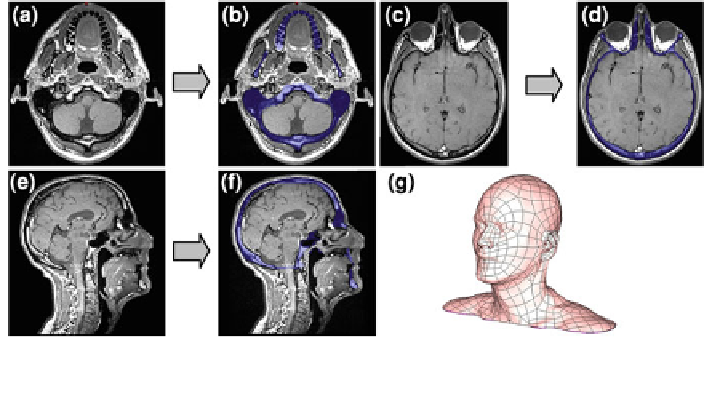Biomedical Engineering Reference
In-Depth Information
Fig. 5.37 a and c: transversal, and e sagittal MRI-scans of the human head, b, d and f: scan
images including corresponding masked structures, g surface model
5.3.2 Human Head
Knowledge of the mechanical properties of adipose-muscle compounds in the
cheek and neck region of the human head are required to investigate health care
products such as razors, or to virtually guide simulated surgical training. The
shaving process depends on head anatomy and the biomechanical properties of soft
tissue (see
Sect. 8.1
). Objective quantification of mechanical tissue loading due to
tissue-razor interaction and optimizing the shaving process is based on a numerical
analysis. An adequate human model including the epidermis and dermis can
provide information on the mechanical stress and tissue deformation, as well as
resulting forces on the razor system. Figure
5.37
a-f depict transversal and sagittal
MRI scans of the human head (volunteer: 24 years, 79 kg, 180 cm, see Table
5.5
)
and differentiated tissue regions as well as the reconstructed surfaces including
head, neck and shoulder region, Figs.
5.37
g,
5.38
, and
5.39
.
5.3.3 Human Spine and Joints
Human models simulating a recumbent or seated body position must adequately
represent the process of sitting or lying down on a body support system and must
reflect tissue stress and strain actually encountered. Modelling the human spine,
hip and knee joints plays an important role in this process. Hence, these anatomical
parts are addressed in detail.

